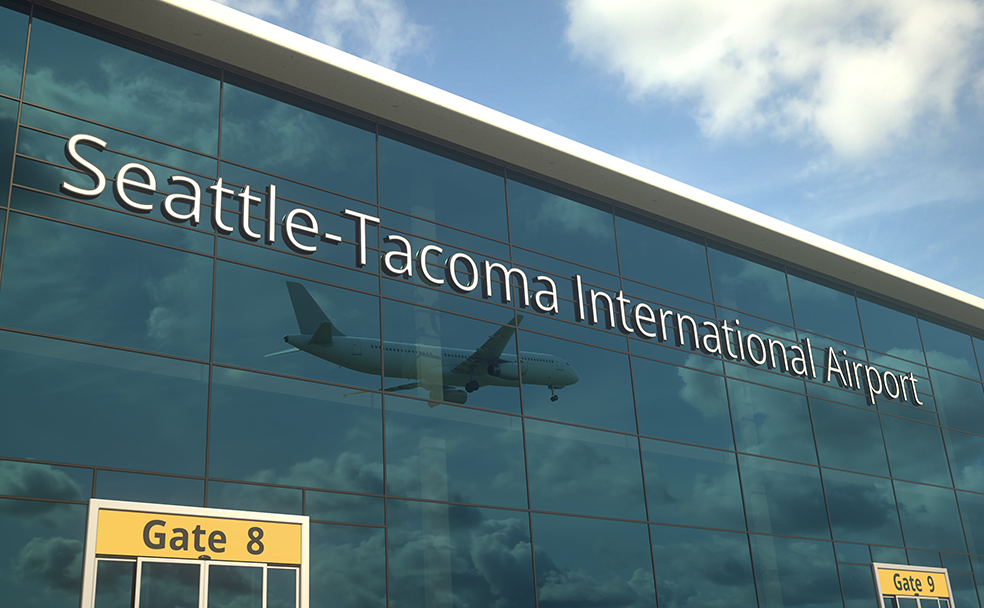Rainer Basse | Senior Advisor, EXP
Joseph Gale | Environmental Project Manager, EXP
Organizations across the globe have set ambitious goals to reach the urgent milestone of net zero by 2050. With millions of tons of carbon dioxide (CO2) produced annually by the aviation industry, decarbonization of aircraft is key to reaching this milestone. With aviation responsible for approximately 2.1% of the world’s CO2 emissions, collective strategies are required to offset environmental impacts and meet the bold target.
“Alongside government agencies, aviation stakeholders and energy providers, we’re working towards short and long-term solutions to decarbonize the aviation industry. One of our primary focus areas is sustainable aviation fuel,” said Joseph Gale.
The U.S. Department of Energy describes sustainable aviation fuel (SAF) as, “a biofuel used to power aircraft that has similar properties to conventional jet fuel but with a smaller carbon footprint. Depending on the feedstock and technologies used to produce it, SAF can reduce life cycle GHG emissions dramatically compared to conventional jet fuel. Some emerging SAF pathways even have a net-negative GHG footprint.” The Commercial Aviation Alternative Fuels Initiative (CAAFI) further outlines a building block approach the industry may now use – 50/50 Jet-A and SAF blend as a true drop-in solution. The International Air Transport Association (IATA) further identifies, “Relative to fossil fuels, sustainably produced, unconventional, jet fuel results in a reduction in carbon dioxide (CO2) emissions across its life cycle.” The reduction in CO2 emissions can be up to 80%.
Sustainable and maintainable
The reduction of carbon emissions is critical to preserving the natural environment. “As an Engineering/Architecture firm, we view SAF in a distinct manner. The ideal short to mid-term solution (i.e., transitionary fuel) will mitigate CO2 emissions, maintain aircraft performance and support existing fueling infrastructure. With the approved pathways to develop SAF, we are working alongside fellow aviation leaders to determine the most efficient solution to meet the supply chain requirements and scalability concerns to maintain its viability as the ideal option,” he added. There are varied feedstocks to produce SAF including plant and animal fats, oils and greases, used cooking oils, biomass, municipal waste and others. With sustainable fuel options, a significant reduction may be seen in greenhouse gas life cycle emissions, as well as lifecycle costs for airports.
Innovative options are in development to power an aircraft for 2025 and beyond. With technological advancements, battery-electric powered planes become a possibility. Currently, these planes are limited to regional and short-haul flights due to the weight of the batteries and the long charging time. The option of hydrogen propulsion has also emerged as a contender for significantly reducing CO2 emissions. The volumetric energy density of compressed gaseous hydrogen is much lower than a liquid fuel option and would only be suitable for short-term flights unless significant changes or modifications to an aircraft.
With SAFs presenting the most viable option for commercial flights, the challenge will be producing and distributing SAF cost-effectively and with minimal carbon intensity for airport operations and stakeholders.
Pathway to net zero
The coordinated support of the entire aviation value chain is required to reach net zero. The unique challenges associated with an alternative fuel require innovative technologies, collaboration, incentivization and a long-term framework to reshape operations. With long-term solutions underway including revolutionary aircraft designs, energy-efficient multi-modal transportation networks and sustainable jet-fuel solutions to help reach this goal, immediate fuel alternatives are also unfolding at the Seattle-Tacoma International Airport (SEA) to reach short-term goals
To identify a pathway to net zero at the Port of Seattle, EXP is working with SEA and King County Solid Waste Division on a Municipal Solid Waste (MSW) to Liquid Fuels Study. The study investigates the potential costs and benefits of building and operating a renewable fuel production facility that uses regionally available MSW. It will also assess viable waste-to-fuel conversion technologies to meet production volume thresholds for the Washington Clean Fuel Standard, evaluate regional waste streams suitable for the conversion to liquid fuels, facility siting locations, socioeconomic implications for communities and other long-term impacts.
Sustainable aviation fuels are an integral part of the path the path to net zero, and the Port of Seattle study plays an important role in determining a feasible path, with a regional focus, for the aviation industry and other hard-to-decarbonize markets. Although a highly complex task, with the industry’s proven track record of resiliency and innovation solutions, we’re confident SAF has us heading towards our net zero destination.
Learn more about EXP’s commitment to sustainable aviation solutions by contacting Environmental Project Manager Joseph Gale.

